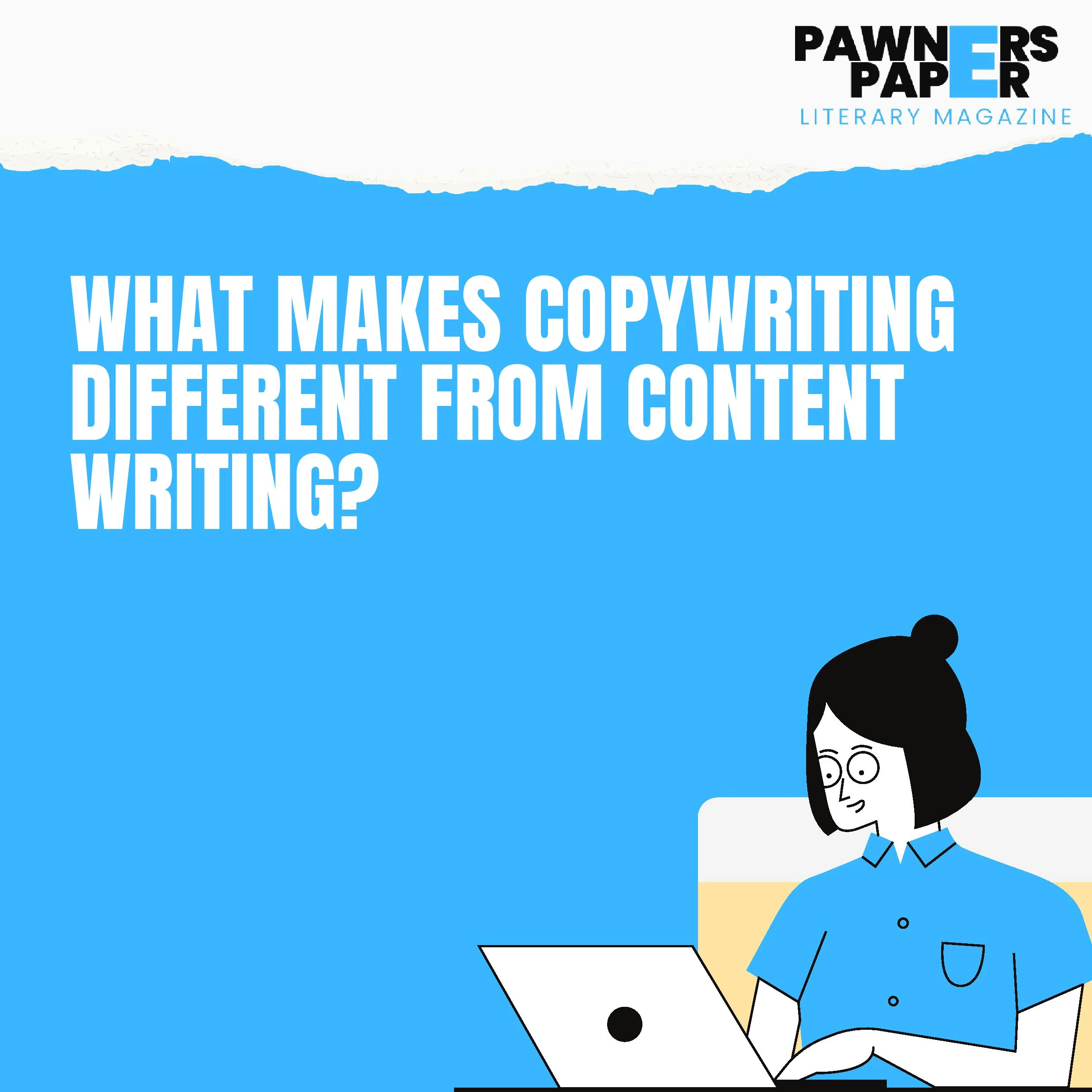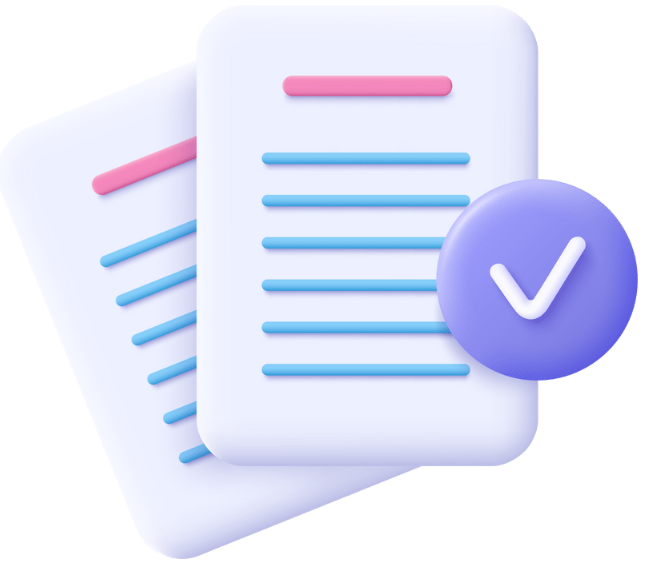An article on the difference between Copywriting and content writing, their elements and the challenges in copywriting and content writing solutions
The Difference Between Copywriting and Content Writing
In essence, copywriting is the type of writing which includes promotional content and marketing copies whereas normal content writing covers everything else.
Technically speaking, content writing is an umbrella term that covers all types of content writing processes, like marketing content writing, email writing, etc.
Considering this concept, we could just say that copywriting is a branch of content writing, and there is, hence, no need to find any differences between them.
However, that is not the context that we will be considering here in this post. We will be considering them both to be separate. With that in mind, let’s take a deep look at what copywriting and content writing are and how they are both done.
What is Copywriting?
As we’ve briefly alluded to above, copywriting includes writing content primarily for promotional and advertising purposes. This means that the main focus when doing copywriting is to make the words and language used in the content engaging and attractive.
Some different instances of copywriting include:
- The slogan or tagline of a company
- A brief description of a certain store sale
- A cold marketing email
The main essence of copywriting is utilizing a small number of words but in such a way that they leave an impact on the reader and prompt them to take a specific action. For example, consider the following line accompanying a product sale:
Buy more for less! Avail jaw-dropping discounts in the next 24 hours by clicking here.
Or something similar.
In writing like this, the text itself is short and concise, but it is made to be attractive to the reader.
What Are the Main Elements of Copywriting?
We’ve described what copywriting is above. But, to give you a better understanding, we’re going to look at the salient features and qualities of this type of writing.
The main elements that have to be borne in mind when copywriting include:
1. Brevity of the text
Brevity means shortness. Copywriting is seldom done long-form. The most common type of copywriting is ad-writing, among others. Ads, as you may have observed, are often based on very little content. They are not paragraphs and passages of text explaining the product or service. Rather, it’s often just a small, memorable line that describes the product/service in question.
Here is an example to help you understand this better.
If you are writing a marketing copy of a color printer, you wouldn’t make it too long like this:
We present a high-quality color printer. This printer is very efficient and fast to work. It consists of four different colors that are utilized for printing all types of colored pictures and documents. It is also very affordable.
This is too long and boring. It would not be able to hold the attention of the reader and, thus, be unable to market the product properly.
A better way to write it would be:
Presenting a high-quality fast color printer, equipped with the four main essential colors to cover all your printing needs. Speed, efficiency, and quality—all for an affordable price tag!
2. Usage of action words
This is another salient feature of copywriting. The text that is written for promotion or advertising purposes has to be packed with action words. Action words, in this context, refer to such words that describe an action or a verb.
Consider the following example:
Transform your jogging sessions with these high-quality trainers!
In this tagline, the words “transform your jogging sessions” can be referred to as action words since they directly describe to the reader what they can do with the help of the product. It conveys a sense of change and improvement.
3. Grammatical and spelling perfection
Obviously, grammatical and spelling perfection is an element that has to necessarily exist in all types of writing and not just copywriting. However, in the case of the latter, it is especially important.
In copywriting, grammar or spelling errors can make the text look amateurish. It can reflect badly on the integrity and reputation of the brand itself. All of these can collectively damage the efficacy of the copywritten material.
What is Content Writing?
Now, let’s move on to discussing content writing.
Content writing, in this particular context, can be understood to be the type of writing that covers everything other than copywriting. Some instances of normal content writing are:
- Writing blog posts
- Writing website landing page texts
- Academic writing, i.e., research papers and theses, etc.
In some instances of content writing, the same types of elements and factors have to be considered as are considered in copywriting. For example, when you’re writing the text for a website’s landing page, you have to maintain brevity. Similarly, when you’re writing a blog post, you have to make it impactful and relatable. And so on.
But, for the most part, content writing is not about creating short and impactful pieces of text. Rather, it is about providing helpful content—even if it means that the content is long and detailed.
Moving on, let’s take a look at some of the elements that you have to consider when doing normal content writing. It is worth remembering that the things we’re mentioning here are not things that only have to be considered in content writing. Rather, they are also valid in copywriting when the need presents itself.
What are the Main Considerations of Content Writing?
Here are some of the main factors that have to be borne in mind in content writing.
1. Helpful and clear explanations
In many instances of content writing, a certain concept or topic has to be explained and elaborated. Consider the example of essay writing and blog writing.
For write-ups like these, it is very important to keep the text clear and helpful.
But what does clear and helpful mean anyway?
Keeping content clear means to keep it readable. It means that your content should be easy to understand by the reader, and it should not leave them confused.
Keeping content helpful means to make it practically useful. A lot of times, writers can present abstract and arbitrary information to the readers that is ultimately of no use to them. For example, when writing a blog post about car maintenance, you have to make it helpful by providing actionable and practical tips to the readers.
If you just talk about the importance of car maintenance and why it is necessary, etc., the content won’t be half as helpful. It won’t be useless, so to say, but it won’t be very helpful.
2. Proper arrangement and organization
Copywriting, as we’ve explained above, is often short and brief. As a result, there is usually no pressing need to arrange and organize the text in a structured form.
However, in content writing, when the text in question is long and extensive, there is a need to properly arrange and organize it. The benefit of doing this is that the reader is able to quickly identify what the content is about and the concepts it covers.
Plus, when the content is properly organized, your readers can easily skip to any part they want to read first. Keeping organized and arrangement in mind is very important for content writing.
Other than these two, another important consideration of content writing is grammar and spelling perfection. However, since we have already described that in detail in the section above, we won’t be doing it again.
Challenges in Content Writing and Copywriting and Their Solutions
There are different challenges and difficulties that are involved in content writing and copywriting. Here are some of them, along with their solutions.
1. In copywriting, it can be difficult to maintain content brevity while also keeping it impactful. Beginners, in particular, can have trouble adjusting the content length and keeping it short where required. To overcome thsis challenge, using an online AI summarizing tool can be a good idea. An online summarizer can shorten a piece of a given text while capturing the main essence of it.
2. Oftentimes, in content writing and copywriting, it can be difficult to make the text engaging and impactful. Finding the right words and phrases can be hard. In our experience, we’ve seen that using an AI-based article rewriter is often a good solution to this. You can enter your content in the tool and watch as it improves its flow and quality.
3. Checking for grammar and spelling issues is very important. However, when done manually, it can take up a lot of time. It requires you to pay attention to all the details in the content and read it a couple of times. A good solution to this is to use an online grammar checker. The tool quickly analyzes the text and points out any issues that it contains.
Conclusion
Hopefully, after reading this post, you have a good idea of what copywriting and content writing is. We’ve explained both of them above, along with the main considerations that have to be made.
Using online tools can be a good way to enhance the process of content writing and copywriting. You can use online grammar checkers to easily spot and fix errors in your content. You can likewise use article rewriters to improve the flow of the text.

_20250410_083915_0000.jpg)










%20(1).jpeg)



.png)
%20(3).jpeg)
COMMENTS